
Tallships, Tugs & Trawlers: Model Ships
Commercial Vessels
Pages
"Firing a Royal Salute" - Ships of the Canadian NavyTallshipsCommercial VesselsShips in a Bottle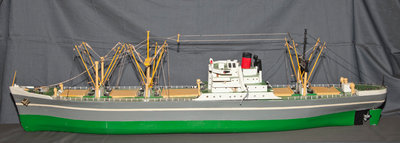
St. Helena Details
A model of the ship “St. Helena” built by Robert Humpage in 1976. The model was once operated by remote control. The actual “St. Helena” sailed on the Welland Canal. The model is made of wood, while string is used for the ropes. The anchors, chains and rope-winder are metal, and the rope pulleys are plastic.

E.B. Audrey Hall Details
A model of the laker the “E.B. Audrey Hall.” By 1918, 182 meter (600 foot) lakers were the largest ships on the Great Lakes and became the standard for all Great Lakes fleets for the next 35 years. The real “E.B. Audrey Hall” was owned and operated by Hall Transportation Corp on the Great Lakes.
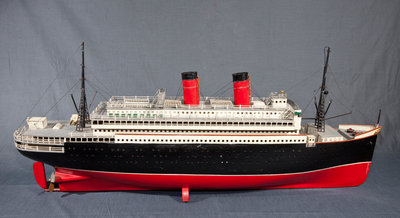
Cunard Line Details
This passenger ship model is made of metal and is patterned after ships that were constructed by Cunard Line in the first half of the 20th century. Mr. J.R. Sidey had it made c.1920s for display in his store. Cunard Line is a British cruise line, founded by Canadian-born Samuel Cunard in 1840, and is still active today.
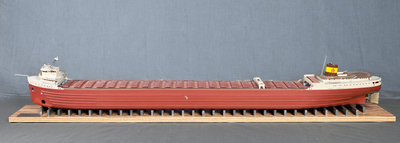
SS Edmund Fitzgerald Details
A model of the Great Lakes freighter, SS Edmund Fitzgerald, which was built in 1957, and shipwrecked in a storm on Lake Superior on November 10, 1975. This shipwreck is one of the most famous on the Great Lakes and was commemorated in Gordon Lightfoot’s 1976 song “The Wreck of the Edmund Fitzgerald”. The model was made in 1990 by Jack Kipfer, and is almost 4 feet in length.
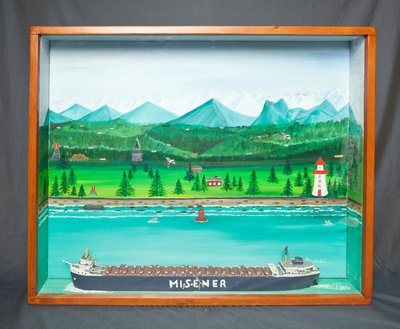
Misener Details
A large framed glass diorama of a Misener Ship model. It was built in 1992 by Gordon Gonyou who worked for 22 years with Misener. The colourful, hand painted scene depicts a waterway in a mountainous rural area with a blue and white laker passing. The ship was built in two pieces and fitted together. Misener ships have a long history of sailing along the Welland Canal. On October 16, 1954 the “Scott Misener” set a record when it topped the 800,000 bushel mark for the first time with a load of barley from Fort William to Port Colborne.
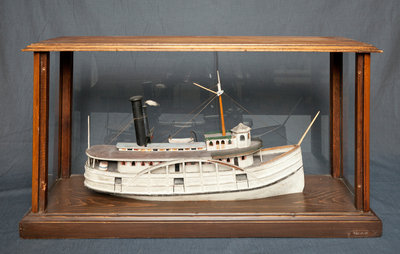
Northern Queen Details
A wood model of the ship the “Northern Queen." The model's restoration was completed on March 16, 1982.
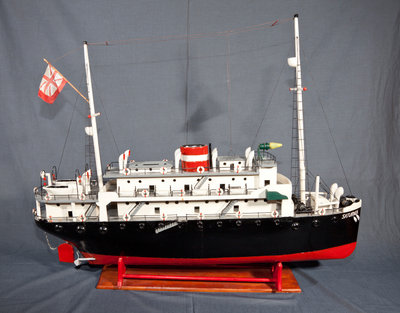
Saturnia Details
A model of the 1920s Italian ocean liner, the “Saturnia”. The hull, masts, lifeboats and cabin are constructed of wood with metal railings. The smoke funnel and vents located on the top deck, bow of ship and stern are made of plastic. The rigging attached to both of the masts is made of fine cord, and the flag is made from a satin material. The model was made c. 1990 by William Cramp.
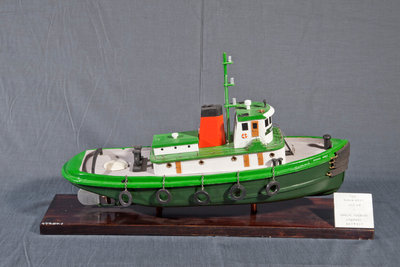
Susan Hoey Details
A model of a tug, purchased around 1980 from a model builder in Goderich Ontario. The original tug, built in 1952, sailed under the names, Bonita, Susan Hoey, Blackie B, Mary Kay, and Robin Lynn. At the end of its working life, the tug was sold for scrap, and cut up in Port Colborne, c.2018.
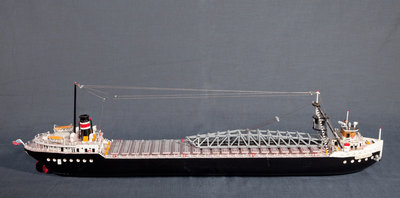
John A. Kling Details
A model of the self-unloader “John A. Kling.” The ship was built in 1922 by the Manitowoc Shipbuilding Company of Wisconsin. The “Kling” was owned by Reiss Steamship Company, and was named for Mr. John Adam Kling, who consolidated four Cleveland building supply companies into a new company called Cleveland Builders Supply in 1897. He served the company first as a general manager, and then in 1900 as its elected president until his death in 1936. This model was built in 1990 by Ted Koszucki.
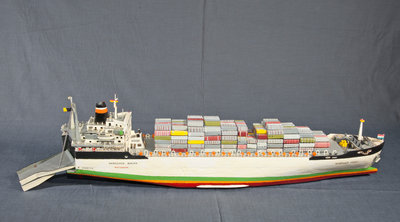
MS Nedlloyd Rouen Details
A model of the ship “MS Nedlloyd Rouen” made in 1990 by Ted Koszucki. The “Nedlloyd Rouen” was a container ship based out of Rotterdam in the Netherlands. The deck of the model is covered with containers. Real chains were used for the ramp as well as for the anchors, while the guardrails are made of string. The “Nedlloyd Rouen” had three decks, was 212 meters long, 32 meters wide, weighed 25,000 tonnes empty, and had a top speed of 19.5 knots. It was built by Nippon Kokan Co. in Japan for the Netherlands in 1978.
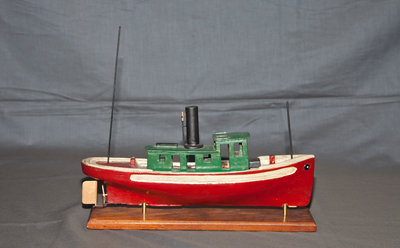
USA Tugboat Details
A model of a tugboat made c. 1890 by P.J. Carr. Tugboats such as this have been operating on waterways since the 1840s. They are used to maneuver large vessels that cannot safely move themselves in crowded harbours or canals, or to move ships that lack their own propulsion system such as barges, disabled ships or oil platforms.
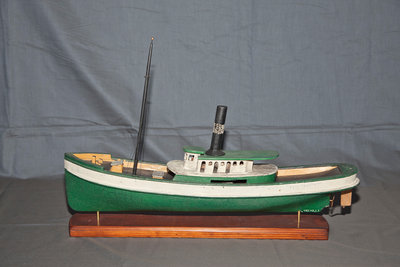
Propeller Ship Details
A model of a propeller-powered ship made c. 1890 by P.J. Carr. Many early steamships used paddle wheels as their primary propulsion system. However, throughout the 19th century, the design of propellers gradually improved until they eventually became the dominant propulsion system that is still used today.
